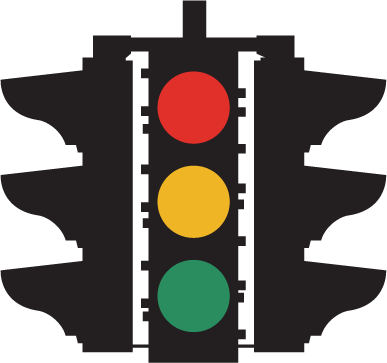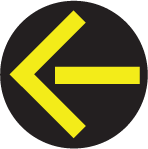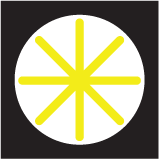Florida Driver Handbook: Traffic Control Signals
Order now9. Signals, Signs and Pavement Markings
- 9.1. Traffic Control Signals
- 9.2. Pedestrian Signals
- 9.3. Lane Signals
- 9.4. Ramp Signals
- 9.5. Traffic Signs
- 9.6. Pavement Markings
 Traffic signals are placed at intersections to keep traffic moving and to avoid a crash. Drivers, pedestrians, and bicycle riders must obey these signals, except when an officer is directing traffic. Stop on the stop line if your car is nearest the signal. Some signals change only when a car is at the stop line. Occasionally, even when properly positioned near the stop line, motorcyclists and bicyclists may not be detected. If traffic signals are out of order, treat the light as if it is a four-way stop sign.
Traffic signals are placed at intersections to keep traffic moving and to avoid a crash. Drivers, pedestrians, and bicycle riders must obey these signals, except when an officer is directing traffic. Stop on the stop line if your car is nearest the signal. Some signals change only when a car is at the stop line. Occasionally, even when properly positioned near the stop line, motorcyclists and bicyclists may not be detected. If traffic signals are out of order, treat the light as if it is a four-way stop sign.
Red
Come to a complete stop at the marked stop line or before moving into the crosswalk or intersection. At most intersections, after stopping, you may turn right on red if the way is clear. Some intersections display a "NO TURN ON RED" sign, which you must obey. Left turns on a red light from a one-way street into a one-way street are also allowed. Anyone convicted of running a red light is required to complete a basic driver improvement course.
Yellow
Stop if you can safely do so. The light will soon be red.
Green
Go - but only if the intersection is clear. Yield to pedestrians and vehicles still in the intersection. If turning left, wait for a gap in oncoming traffic to complete the turn. If you turn left or right, yield to pedestrians crossing in the crosswalk that you turn into.
Red Arrow
 Just like a red light, come to a complete stop at the marked stop line or before moving into the crosswalk or intersection. After stopping, you may turn right on a red arrow at most intersections if the way is clear. Some intersections display a "NO TURN ON RED" sign, which you must obey. Left turns on a red arrow from a one-way street into a one-way street are also allowed.
Just like a red light, come to a complete stop at the marked stop line or before moving into the crosswalk or intersection. After stopping, you may turn right on a red arrow at most intersections if the way is clear. Some intersections display a "NO TURN ON RED" sign, which you must obey. Left turns on a red arrow from a one-way street into a one-way street are also allowed.
Yellow Arrow
 Stop if you can. The light will soon be red. The yellow arrow means the same as the yellow light, but applies only to movement in the direction of the arrow.
Stop if you can. The light will soon be red. The yellow arrow means the same as the yellow light, but applies only to movement in the direction of the arrow.
Flashing Left Yellow Arrow
 A flashing left yellow arrow means left turns are allowed. Yield to oncoming traffic and pedestrians. The oncoming traffic has a green light.
A flashing left yellow arrow means left turns are allowed. Yield to oncoming traffic and pedestrians. The oncoming traffic has a green light.
Flashing Right Yellow Arrow
 A flashing right yellow arrow means right turns are allowed. Yield to oncoming traffic and pedestrians.
A flashing right yellow arrow means right turns are allowed. Yield to oncoming traffic and pedestrians.
Green Arrow
 A green arrow, pointing right or left, means you may make a turn in the direction of the arrow. If the red light is illuminated at the same time, you must be in the proper lane for such a turn and you must yield the right-of-way to vehicles and pedestrians clearing the intersection.
A green arrow, pointing right or left, means you may make a turn in the direction of the arrow. If the red light is illuminated at the same time, you must be in the proper lane for such a turn and you must yield the right-of-way to vehicles and pedestrians clearing the intersection.
Flashing Signals
 A flashing red light means the same thing as a stop sign. It is used at dangerous intersections.
A flashing red light means the same thing as a stop sign. It is used at dangerous intersections.
 A flashing yellow light means you may move forward with caution. It is used at, or just before, dangerous intersections, or to alert you to a warning sign such as a school crossing or sharp curve.
A flashing yellow light means you may move forward with caution. It is used at, or just before, dangerous intersections, or to alert you to a warning sign such as a school crossing or sharp curve.
Check out our Customer Reviews!


